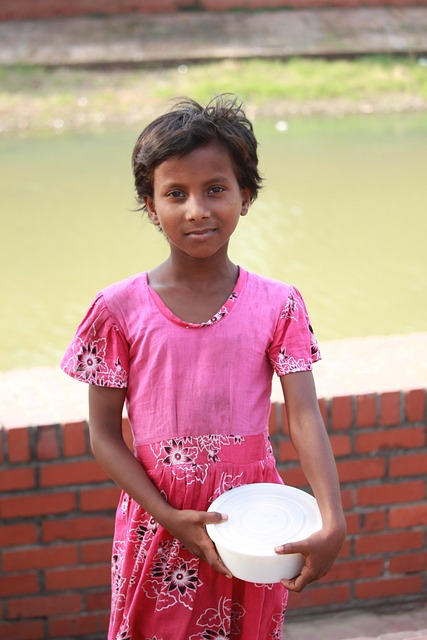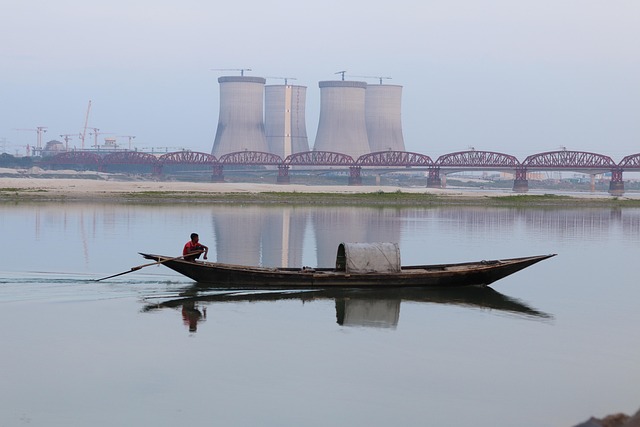Technology’s Role in Pakistan-Bangladesh Relations: Bridging Gaps

Technology is reshaping Pakistan vs Bangladesh relations, fostering cooperation across sectors like…….
The Digital Pulse for Pakistan Vs Bangladesh in Karachi PK
Stay connected with the latest Pakistan Vs Bangladesh insights and trends on pakistan-vs-bangladesh.karachi-pakistan.com. Delve into specialized content.
In the complex web of international relations and geopolitical dynamics, the comparison between Pakistan and Bangladesh stands as a fascinating study in contrast and development. This article aims to dissect and explore the multifaceted aspects of ‘Pakistan vs Bangladesh’, delving into their historical interplay, economic trajectories, technological innovations, and the global impact of their evolving relationship. Through this analysis, we will unravel the intricacies that shape these nations, offering insights for policymakers, economists, and enthusiasts alike.
‘Pakistan vs Bangladesh’ refers to the comparative study of two South Asian nations, each with its unique history and cultural identity. Pakistan, officially the Islamic Republic of Pakistan, was formed in 1947 as a separate state for Muslim-majority regions within British India. Bangladesh, formerly East Pakistan, seceded from its western counterpart in 1971 after a pivotal war of independence, becoming the People’s Republic of Bangladesh.
The core components of this comparison include political systems, economic structures, social dynamics, and cultural exchanges. Historically, their relationship has been characterized by periods of cooperation and tension, often influenced by regional geopolitics and border disputes. Understanding these nations’ interplay is crucial as it reflects broader trends in South Asian integration and the impact of historical divisions.
The rivalry and cooperation between Pakistan and Bangladesh have global implications due to their strategic locations and significant populations. Both countries are members of various international organizations, such as SAARC (South Asian Association for Regional Cooperation) and the OIC (Organization of Islamic Cooperation), which influence regional economic and political agendas.
Key Trends:
Economic Integration: The South Asia Free Trade Area (SAFTA) has fostered increased trade between Pakistan and Bangladesh, leading to improved economic ties. However, imbalances persist, with Pakistan often boasting a more robust export sector.
Conflict Resolution: Border disputes, such as the Teesta River water-sharing issue, have been recurring challenges. Yet, recent efforts at dialogue and negotiation demonstrate a growing maturity in their approach to resolving conflicts peacefully.
Global Migration: The movement of people between Pakistan and Bangladesh is significant, with remittances playing a crucial role in both countries’ economies. This transnational connection shapes cultural dynamics and influences policy decisions.
The economic relationship between Pakistan and Bangladesh exhibits a complex interplay of interdependence and competition.
Market Dynamics:
| Sector | Pakistan’s Strengths | Bangladesh’s Advantage |
|---|---|---|
| Textiles | World-class manufacturing infrastructure, renowned for denim and cotton products | Competitive labor costs, rapidly expanding ready-made garment (RMG) industry |
| Agriculture | Diverse crop production, strong rice and wheat sectors | Rich agricultural heritage, leading producer of jute and tea |
| Services | Growing IT sector, financial services hub | Significant progress in the IT-enabled services sector, offshore outsourcing destination |
Investment Patterns: Pakistan has been a more attractive destination for foreign direct investment (FDI) due to its larger market size and strategic location. However, Bangladesh has witnessed remarkable growth in domestic investment, particularly in infrastructure and manufacturing. Both countries offer lucrative opportunities for investors, each with its unique advantages.
Technology serves as a powerful catalyst for development, and both Pakistan and Bangladesh have made notable strides in this realm.
Key Technologies:
Telecommunications: Pakistan has one of the highest mobile penetration rates in South Asia, while Bangladesh has witnessed a rapid surge in internet connectivity, thanks to affordable smartphone adoption. This digital divide is narrowing, fostering increased regional communication and e-commerce potential.
Renewable Energy: Both countries are exploring renewable sources like solar and wind power to address energy security concerns. Pakistan’s sunny climate makes it ideal for solar energy, while Bangladesh’s vast water bodies offer opportunities for hydroelectric projects.
Digital Financial Services: Mobile banking and digital wallets have gained traction in both nations, improving financial inclusion. Pakistan’s mobile money system, M-Pesa, is a game-changer, while Bangladesh’s bkash has similarly transformed the way people send and receive money.
The policy frameworks of Pakistan and Bangladesh significantly influence their economic landscapes and foreign investment.
Regulatory Environments:
Pakistan: Known for its relatively stable political environment, Pakistan offers a range of incentives for investors, including tax breaks and special economic zones (SEZs). However, bureaucratic hurdles and regulatory complexities can deter some investors.
Bangladesh: Its government has implemented progressive policies to attract FDI, particularly in the garment and textile sectors. The country’s labor laws and minimum wage regulations have evolved to protect workers’ rights while ensuring industry competitiveness.
Despite their progress, both Pakistan and Bangladesh face significant challenges that hinder their development trajectory.
Common Issues:
Infrastructure Deficits: Inadequate transportation networks and energy shortages impact both countries’ economic growth. Upgrading infrastructure is crucial for facilitating trade and attracting investment.
Corruption: Perceived levels of corruption remain a concern, deterring foreign investors and hampering effective governance. Implementing anti-graft measures and promoting transparency are essential.
Education and Skills Gaps: While both countries have made strides in education, there is a need to improve the quality and accessibility of skills training, particularly in STEM fields and digital literacy.
Proposed Solutions:
Real-world examples provide valuable insights into the potential of ‘Pakistan vs Bangladesh’ collaboration.
Case Study 1: Cross-Border Trade (Pak-Bangla Border Trade)
The ease of cross-border trade between Pakistan and Bangladesh has significantly improved since the establishment of dedicated border centers. This initiative has led to:
Lessons:
Case Study 2: Digital Financial Inclusion (M-Pesa in Pakistan and bkash in Bangladesh)
Both countries’ mobile money systems have revolutionized financial services, particularly for the unbanked population.
M-Pesa (Pakistan): Introduced by Jazz Cash, it has enabled millions of Pakistanis to access banking services, facilitate remittances, and conduct daily transactions securely.
bkash (Bangladesh): With over 70 million users, bkash has played a pivotal role in the country’s financial inclusion drive, allowing people to send and receive money instantly via mobile phones.
Impact:
Looking ahead, the future of ‘Pakistan vs Bangladesh’ holds immense potential, with several growth areas and emerging trends shaping their trajectories.
Potential Growth Sectors:
Green Technologies: Both countries can capitalize on their renewable energy potential, attracting investments in solar, wind, and hydroelectric projects.
Information Technology (IT) and Business Process Outsourcing (BPO): As digital transformation accelerates, Pakistan and Bangladesh can further strengthen their IT sectors, offering specialized services to global clients.
Agri-Food Processing: With robust agricultural bases, they can establish agri-food processing hubs, ensuring food security and creating employment opportunities.
Emerging Trends:
Digital Economy: The rise of e-commerce and digital platforms presents opportunities for cross-border trade and investment. Establishing secure digital payment systems and enhancing internet infrastructure will be crucial.
Regional Connectivity: Improving road, rail, and sea connectivity between South Asian countries can significantly boost trade and tourism, with Pakistan and Bangladesh playing pivotal roles in this network.
Healthcare Collaboration: Given the shared challenges of healthcare delivery, collaborative efforts in medical research, drug development, and public health initiatives could yield significant benefits for both nations.
‘Pakistan vs Bangladesh’ is more than a mere comparative study; it represents a dynamic partnership that shapes the geopolitical landscape of South Asia. Through their historical interplay, these nations have navigated challenges, seized opportunities, and contributed to regional development.
The analysis presented in this article highlights several key takeaways:
As Pakistan and Bangladesh continue their journey forward, the world watches with interest, recognizing that their success or struggles will resonate across regions, influencing global economic and political dynamics.
Q: How do border disputes between Pakistan and Bangladesh impact trade?
A: Border disputes can create obstacles to trade, leading to delays at checkpoints and increased transaction costs. However, recent efforts at dialogue have resulted in improved border management, facilitating cross-border trade.
Q: What role does remittance play in the economies of Pakistan and Bangladesh?
A: Remittances from workers in both countries significantly contribute to GDP growth, poverty reduction, and household welfare. They also influence local businesses and stimulate rural development.
Q: Are there opportunities for joint ventures between Pakistani and Bangladeshi companies?
A: Absolutely! Joint ventures can leverage each country’s strengths, such as Pakistan’s manufacturing capabilities and Bangladesh’s skilled workforce. Sectors like textiles, IT, and renewable energy offer promising avenues for collaboration.
Q: How does digital literacy impact youth employment in Pakistan and Bangladesh?
A: Digital literacy equips young people with skills sought after by the growing digital economy. It opens doors to opportunities in IT, e-commerce, and digital marketing, potentially reducing youth unemployment rates.

Technology is reshaping Pakistan vs Bangladesh relations, fostering cooperation across sectors like…….

Pakistan vs Bangladesh presents contrasting cultural landscapes shaped by unique histories and geogr…….

Pakistan and Bangladesh, despite shared heritage, exhibit distinct cultures and social structures. P…….

Pakistan and Bangladesh, South Asian neighbors, showcase contrasting democratic journeys and social-…….

After independence in 1971, Pakistan and Bangladesh developed distinct cultural landscapes, language…….

Digital platforms have reshaped information sharing and consumption in Pakistan and Bangladesh, fost…….

Pakistan and Bangladesh, despite historical tensions, possess immense economic cooperation potential…….

Despite political differences, Pakistan and Bangladesh share vibrant cultural heritage through simil…….

Pakistan and Bangladesh, geographically intertwined yet culturally distinct, grapple with historical…….